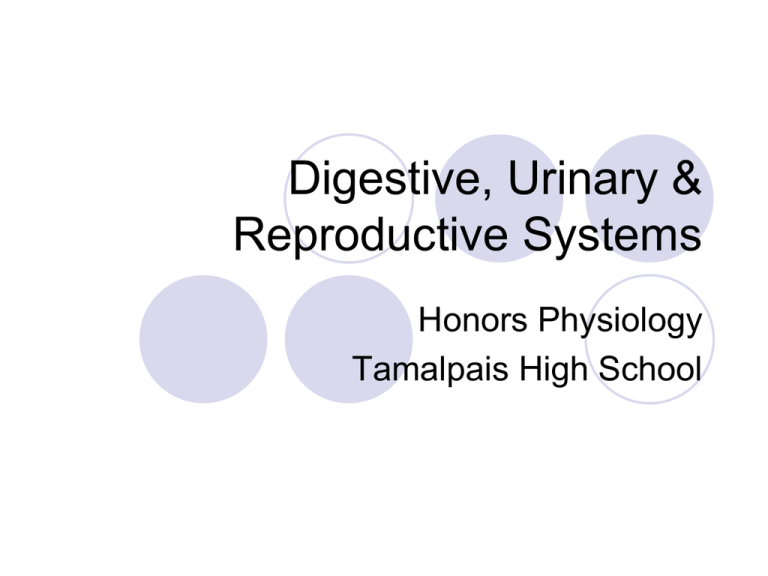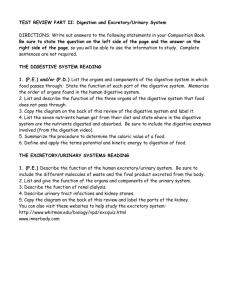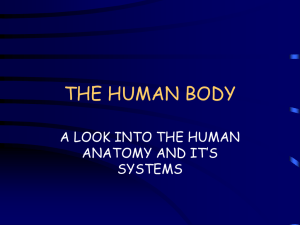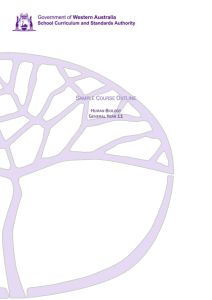The Digestive System - Tamalpais Union High School District
advertisement

Digestive, Urinary & Reproductive Systems Honors Physiology Tamalpais High School The Digestive System I. System Function • The digestive system mechanically and chemically breaks down food and absorbs the products. II. System Structures • The digestive system consists of an alimentary canal and several accessory organs. Fig. 17.1 The Digestive System III. The Alimentary Canal Fig. 17.2 The Digestive System III. The Alimentary Canal A. Wall Layers 1. Mucosa Structure: composed of epithelial, connective, and smooth muscle tissue; mucus secreting glands present Function: protection, absorption, secretion 2. Submucosa Structure: composed of loose connective tissue; glands, blood and lymph vessels present Function: nourishment Fig. 17.3 The Digestive System III. The Alimentary Canal A. Wall Layers 3. Muscular layer Structure: 2 layers of smooth muscle; circular and longitudinal shaped fibers Function: movement 4. Serosa Structure: composes the outer layer of the canal Function: secretion of fluid to lubricate so tube can slide freely The Digestive System B. The Oral Cavity 1. mechanical digestion: teeth & tongue Fig. 17.5 & 17.11 2. Chemical digestion: salivary glands, amylase (starch) The Digestive System C. The Pharynx 1. Epiglottis Fig. 17.14 The Digestive System D. The Esophagus 1. peristalsis Fig. 17.15 The Digestive System E. The Stomach 1. Mechanical Digestion: grinding 2. Chemical Digestion: HCl, pepsin (proteins), lipase (fat) Fig. 17.17 The Digestive System F. The Small Intestine 1. Chemical Digestion: Several enzymes break down protein, carbohydrates, fat, and nucleic acids (DNA & RNA) 2. Nutrients absorbed into the bloodstream Fig. 17.35 The Digestive System G. The Large Intestine 1. No digestion 2. Water reabsorbed here, waste storage & elimination Fig. 17.43 The Digestive System IV. Accessory Organs A. Liver 1. Creates bile B. Gallbladder 1. Stores bile Fig. 17.26 The Digestive System C. Pancreas 1. Several digestive enzymes dumped into the small intestine Fig. 17.23 The Urinary System Fig. 20.1 The Urinary System I. Overview of the Urinary System Organs A. Kidneys Function: Homeostasis • maintain the chemical make-up of the blood balance of water, salts, acids and bases Function: Excretion • filters and excretes “bad” stuff toxic nitrogen compounds ingested compounds (drugs, etc) The Urinary System B. Urinary Bladder storage and voiding of urine stretchy smooth muscle walls C. Ureters and Urethra smooth muscle urine transportation tubes peristalsis The Urinary System II. Kidney A. Macroscopic Anatomy Protective layers: renal capsule and adipose tissue Internal Anatomy: Three distinct regions: Cortex Medulla Pelvis Fig. 20.4 The Urinary System B. Microscopic Anatomy nephron Figs. 20.4 & 20.6 The Urinary System Renal corpuscle glomerulus glomerular/Bowmans capsule Proximal convoluted tubule Nephron loop (loop of Henle) - descending limb - ascending limb Distal convoluted tubule Collecting duct system Figs 20.6 & 20.8 The Urinary System III. Urine Formation Three Major Processes: Filtration, Reabsorption, Secretion The Urinary System A. Filtration - in the cortex - blood is filtered from capillaries of the glomerulus into the glomerular capsule. membranes act as strainers permit passage of smaller molecules (glucose, N waste, water) but restricts blood cells and larger proteins pressure gradient The Urinary System B. Reabsorption - cortex and medulla Most in the PCT Some in the loop of Henle (H2O) and DCT “Good” small molecules return to the blood. glucose, sodium, potassium, water Molecules not reabsorbed includes: urea, creatinine, uric acid 99% of original filtrate is eventually reabsorbed. The Urinary System C. Secretion Cortex and medulla The PCT, DCT and collecting ducts “Bad” substances that were not filtered move into the nephron by active transport Substances include: toxic by-products, drugs, non-natural molecules The Reproductive System I. The Male Reproductive System Fig. 22.4 The Reproductive System II. Spermatogenesis Fig. 22.9 Production of male gametes (sperm) A healthy, adult male makes about 400 million sperm a day! Sperm are made in the seminiferous tubules in the testes Testosterone is made by the interstitial cells in the testes The Reproductive System III. The Female Reproductive System Fig. 22.19 The Reproductive System IV. Oogenesis The process which leads to the production of female gametes (eggs) The ovarian cycle produces one egg every 28 days The corpus luteum produces progesterone The follicle cells produce estrogen Fig. 22.26 The Reproductive System The Reproductive System







